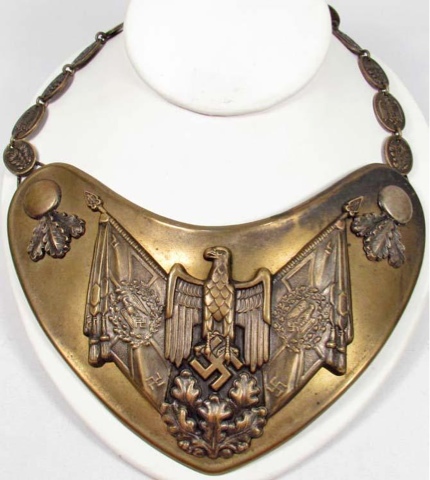By the 18th century, the gorget shrank to a small piece of crescent shaped metal. Suspension around the neck was by chain or ribbon.
As the examples below demonstrate, the gorget bore arms distinctive to the nation or monarch of the officer. Often, regimental numbers or symbols were etched on the gorget for that distinctive flair. 18th and 19th century gorgets are found in brass, gilded brass, silver and brass or silver with enamel. As with officer's swords of the time, the gorget was as ornate as the officer could afford.
Hessian gorget
The gorget made its way into the new world as a trade item. Europeans exchanged gorgets with Native Americans for pelts and other goods.
By the 1830s, most of the world's military ceased wearing the gorget. However, it's use is seen in the 20th century -- most notably by the German military.
I've always considered the gorget an interesting proposition for collecting, but have not entered the field. With so many variations, and with relative ease of display, a collector could assemble quite a large and impressive collection. German WWII gorgets are easily found in the market and at a varied price range. As with everything German WWII, non-military items are the most affordable with SS items garnering the highest prices. I have not encounter many 18th or 19th century gorgets on the market. The few that I have seen bore significant price tags. Due to the popularity of reenacting, gorgets have been reproduced. The reproductions are fairly easily to spot, but the buyer should beware of false aging and other faking techniques.












